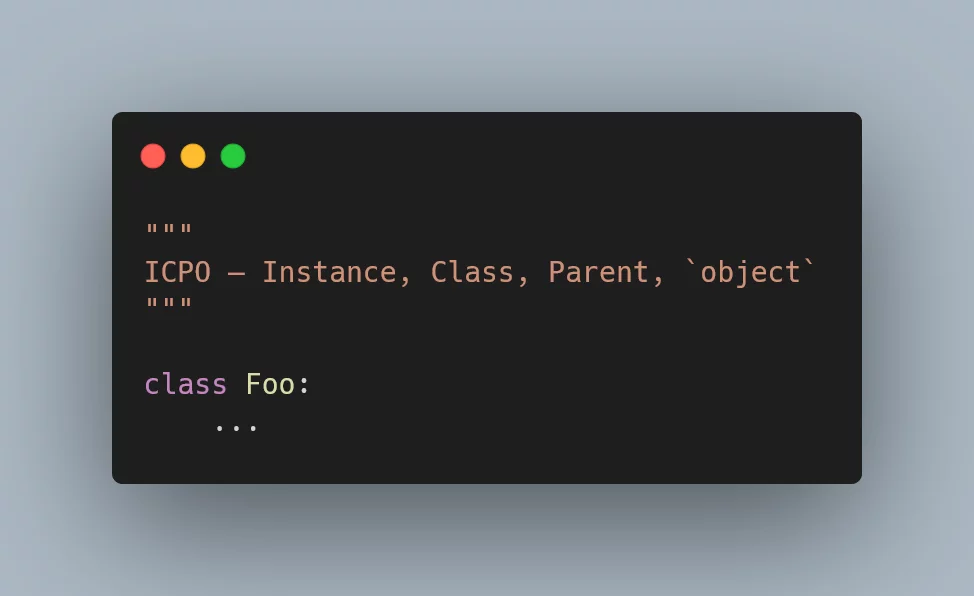
ICPO rule for attribute lookup
How does Python do attribute lookup when dealing with objects?
It uses the ICPO rule: it checks the instance, then its class,
then the parent(s), and finally the object object.
I was attending Reuven Lerner's Advanced Python objects class today, and Reuven really nailed down the explanation for something that I had an intuitive understanding, but that I had never seen laid out so cleanly.
This ICPO rule tells us where Python looks whenever we try to access an attribute or a method of an object.
The I, standing for Instance, means that any object instance may have things that are its own. Those things, that are unique to that instance, take precedence over everything else.
After that, comes the C, that stands for Class. These are the things that are defined for the class – and this is what caught me off guard: methods are generally looked up at this level!
Here's an example:
class Person:
def __init__(self, name):
self.name = name
def greet(self):
return f"Hello, {self.name}."
p = Person("Rodrigo")
print(p.greet())When Python finds the p.greet() piece of code, it realises it has to look up greet
in p.
First, it checks the instance for something called greet, and it finds nothing.
Then, it looks on p's class, which is Person.
Person defines a greet, so that's what we run.
And this is what was wrong in my mind!
I thought the greet function that is being called belonged to the instance, but it doesn't.
To show you it doesn't, I'll add a greet method that does belong to the instance:
class Person:
def __init__(self, name):
self.name = name
def greet(self):
return f"Hello, {self.name}."
p = Person("Rodrigo")
p.greet = lambda: "Go away!"
print(p.greet()) # Go away!
del p.greet # Deletes the instance's `greet`.
print(p.greet()) # Hello, Rodrigo.As you can see, the p.greet = lambda: ... shadowed the class's greet!
Then the rule goes on to tell you that, after checking the class, we check the parent classes: this is useful if there's inheritance going on.
Finally, we check the object object, from which all classes inherit.
(So, in a way, I guess object could be included in the “P” of the rule!
But I think it's nice to have it explicit here.)
In the Person example, the fact that we can go all the way up to object
when doing attribute lookup is useful when, for example,
we print our Person objects:
print(p) # <__main__.Person object at 0x0000012A5C9E7520>Even though I did not define the dunder methods __str__ or __repr__,
the print statement worked because object defines __repr__ for me.
That's where Python went to get the representation of my Person instance.
I learned much more in Reuven's class, but most of it is still being processed by my tired brain... So, stay tuned and I'll see you around!
Become a better Python 🐍 developer, drop by drop 💧
Get a daily drop of Python knowledge. A short, effective tip to start writing better Python code: more idiomatic, more effective, more efficient, with fewer bugs. Subscribe here.
